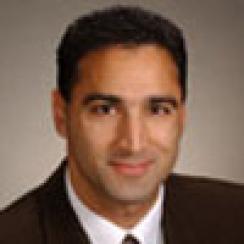Canadian regulators are sparing no one in their campaign to ensure that investors get the best bang for their investment buck. In the past year, regulators have turned their focus from brokers to their clients, the institutional investment managers, in what one observer has called, “Step two in a One-Two Punch”.
Institutional investment managers in Canada are navigating a sea of rules that started flowing from regulators over the last three to four years, some of which echo the concerns of managers themselves for greater end-user transparency in the execution process and doubts triggered by the May 6 Flash Crash.
The first front in Canada’s investor-friendly war was getting legislative weight behind IIROC’s (the Investment Industry Regulatory Organization of Canada) campaign of making brokers responsible for executing every trade where it can get the best price. That entailed brokers connecting to crossing networks, dark pools and any of the increasing number of other alternative trading systems (ATS). Now institutional investment managers that are registered as advisers must show their authorities, the members of the Canadian Securities Administrators (CSA), that they're complying with the securities laws of their respective jurisdictions, especially best execution obligations under the statute, National Instrument 23-101. And, managers also have to follow the actions of their brokers. For example, investment managers in Ontario are being monitored by the Ontario Securities Commission (OSC) as to whether they can assess that their brokers are complying with their best execution obligation. Investment managers “can’t just point to their brokers and say ‘they’re handling it’,” says Robert Young, head of equities for Liquidnet Canada.
“One of the top five red flags” in the course of this monitoring, says Young, is when a manager turns out to be lacking access to a facility with the tools or technology for tapping into alternative liquidity sources. Consequently the focus also has spawned a boon for suppliers of smart routing systems.
ATS are the means to additional sources of liquidity, says Young. Consequently Liquidnet, an institutional network that crosses trades without broker intervention, which claims average shares available daily of 242 million, expects to keep attracting order flow to its block crossing network. “In looking for evidence of best execution,” says Young, “regulators can’t overlook us.”

Although OSC regulators haven't visited Hillsdale yet, Kaul says, “questions are arising during searches, from prospects and consultants who are more focused on the bigger picture questions of how things are structured and how we’re defining and measuring our value-added.”
In turn, “we’re looking at how we choose brokers with much more emphasis on how they quantify value added and what each broker brings,” he says. “We have to think about technology in terms of high frequency trading and multiple venues,” in determining the execution service brokers are supplying. The selection criteria spans the whole suite of offerings; research, transparency, market access issues, how the budget is to be allocated. “It’s a much more intensive focus than before,” says Kaul. While not necessarily planning to change his stable of brokers, he says, “We will reshuffle the dollars we allocate to different brokers.”
Hillsdale is observing more closely where orders are going and how they’re routed, but hasn’t considered purchasing a smart order routing system due to cost and complexity issues, says Kaul. “It’s an endless endeavor to keep up with the technology in terms of algos and speed.”
Eventually the cost of this extra concentration on the investment process and subsequent regulatory reporting will boost the cost of investing, which must flow back to the consumer. But Kaul sees the potential good that competition for order flow can have on the marketplace, “as long as buyers and sellers can meet without having to worry about integrity and reliability,” says Kaul. “Somewhere in the micro structure of 100s of rules, the processes combined must equal the integrity of system.”






